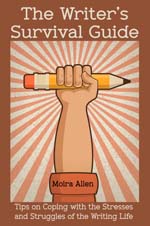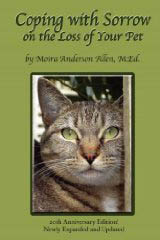 Your Guide to a Successful Writing Career
| |||
|
by Michael Sedge
Initially, you should consider overseas publications to be secondary markets. Rather than thinking up new ideas, you can quickly produce query letters based on completed articles and photos and get them out to several editors. Your goal should be to get in the doors and build a relationship with editors that will eventually lead to new assignments. Once that happens, your writing business begins to work in reverse. That is, foreign publications become the prime markets and you then resell the original articles done for them in North America. Why, you may ask, don't you simply send the completed manuscript and images to the editor? After all, isn't the editorial package complete? Editors, no matter where they live, are busy people. It takes a few seconds to read a good query and know whether one wants an article/photo package on a subject. A finished submission, on the other hand, takes up more time. In addition, queries can also be sent easily by fax or e-mail to get quick attention from editors. Long, multi-page article transmissions and stock photo listings are not only cumbersome, but discouraged by most buyers.
Once an article/photo package has been accepted, based on the initial query, an editor may request a specific focus to target his readership. He may want a piece half the size of your original story, or twice the size. There may be individuals or information that he wishes to be included. He could request 60 color slides, or black-and-white prints. On the other hand, he may only want four or five. Last year, for example, I wrote a feature for Armed Forces Journal International, in Washington, DC. The topic was computer security. While the article focused on military computer systems, much of the information also applied to corporate electronics. I therefore considered this a good candidate for any international magazine covering business. Following my initial market research, off went four queries to different parts of the globe. A week later, Isabelle Lim, then editor of the Singapore Airport magazine Changi, informed me that the article would probably fit into the business section of the magazine. She preferred, however, some link to Singapore as well as a selection of general images of people using computers. Reviewing my research, I found a quote by Lam Kwok Yan, a senior lecturer and spokesman for a group of researchers at the National University of Singapore. I inserted this information near the beginning of the article, giving it the exact slant Lim had requested. I also included a selection of color slides. The result: a two page article, with two images, which brought $420. Rewriting articles to give them specific country or market focus will greatly increase your chances of an international sale. Inserting quotes or information from the periodical's home country, as I did in the above article, tells the editor that you are tuned to his readership. It adds credibility to you as a writer, and moves you one step closer to receiving future assignments. Similarly, when photographs reflect the "home country" of the publication, art directors tend to select those over other images they may be considering. When an editor likes your work, take the required time and effort to focus the article and images. Even though a full or partial rewrite or even a new shoot may not be required, take the time necessary to do what is required to make the sale. Take the editor's or art director's point of view for a minute. Look at your text and images for possible reasons they could be rejected. For instance:
Your work: Contains a religion or religions, alcohol, drugs, modern women's fashions, dogs, pigs; includes quotes from clergy; touches on military topics. If your original article was written in English (US), you can change the configuration of your word processor to, say, English (UK), run the spell checker and convert those "ers" to "res" and "zeds" to "seds." If you are in doubt whether a word is spelled differently in the United Kingdom than in North America, check an on-line British-American dictionary. At present there are a number of such dictionaries; just do a Google search on "British-American dictionary" to find them. Photographers should also examine their images to ensure they are not slanted towards a market other than the one they are trying to sell. For instance, if you are illustrating Russian fishing fleets, you certainly would not want to have Japanese fisherman in the picture. Similarly, for an article on French Champagne, you would not want wine bottles labeled Chianti. No one said that becoming an international freelancer was easy. As these examples demonstrate, it often takes additional effort to make your work sellable abroad. Much less work, however, than creating a completely new feature or slide selection.
This article is excerpted from The Writer's & Photographer's Guide to Global Markets This article may not be reprinted without the author's written permission. Michael Sedge has worked in the editorial/promotion/IT industry for the past 25 years and has over 2,800 published articles and several books to his credit. Sedge has resided in Southern Italy since 1973. His work has appeared in such publications as Robb Report, Travel-Holiday, Newsweek International, Mabuhay (Philippines), and Silver Kris (Singapore). Sedge has been a foreign correspondent for Armed Forces Journal International, Internetnews.com, and Mediterranean/Middle East editor of Scientific American Discovering Archaeology. For more information, visit https://www.thesedgegroup.com. |
| ||
| |||




